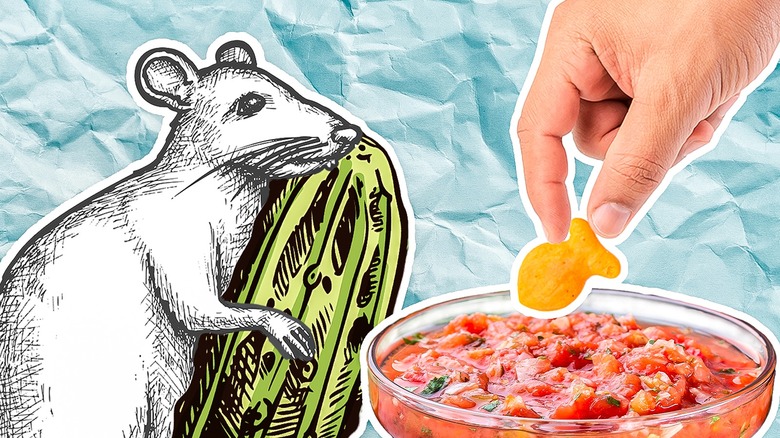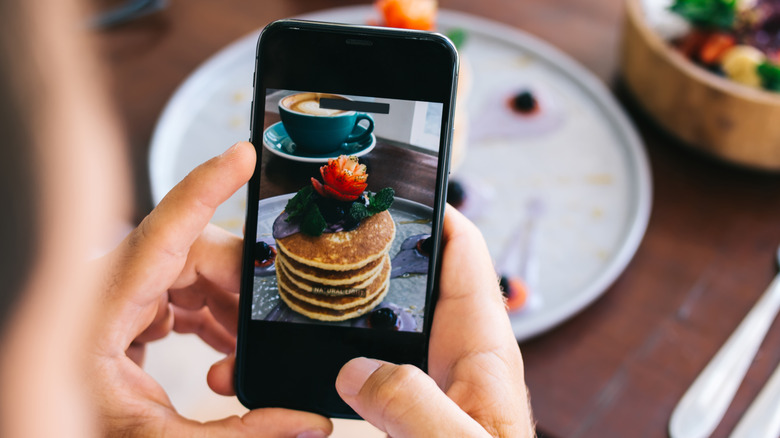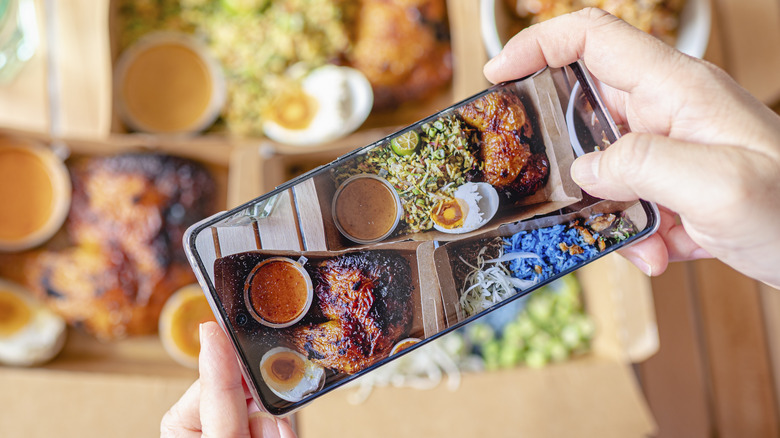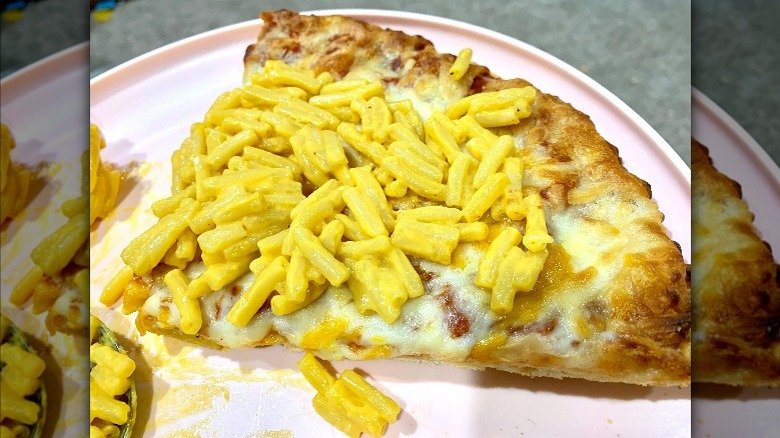TikTok's 'Rat Snack' Trend Appeals To The Goblin In All Of Us
Despite their thoroughly unappetizing name, rat snacks have become one of the latest social media food trends to take over TikTok and other platforms. Everything deserves its 15 minutes of fame these days, but what on Earth is a rat snack anyway, and how did this kind of thing become popular?
Rat snacks are essentially the food equivalent of going "goblin mode." It's the weird midnight snack you hide from your loved ones because you think you're the only person who could ever enjoy it. It's a trend that allows social media influencers and common folk alike to realize they aren't the only ones who love to consume pickles covered in melted cheese or Goldfish mixed up into salsa, eaten with a spoon as if it were cereal.
These snacks allow people to capitalize on the weird things that make your stomach rumble in the night — in the form of relatable content. Much more than that, though, rat snacks are social media food trends coming full circle from their humble origins and blossoming into a wonderful, if less than aesthetically pleasing, butterfly.
How did we get here?
In social media's days of yore — 10 or 12 years ago, give or take — one of the earliest ways to express yourself (outside of song lyrics, Apple's Photo Booth images, and personality quizzes) was to post pictures of food. In fact, some of the first images posted to Instagram were of what one of its founders had for dinner. Scroll far enough back on any longtime Instagram user's feed, and you're likely to encounter something similar.
These weren't the clean, designed, curated images we see today. They were taken on a point-and-shoot camera or an early camera phone with megapixels in the single digits; they probably had direct flash and then a grainy filter slapped on top. This wouldn't pass for much nowadays, but these types of posts served as a positive form of self-expression at the time.
Just seven years after Instagram's launch, social media became a far cry from those early posts — and simultaneously, the world of posting food on Instagram was actually changing the way chefs crafted their menus. They knew that only the best-looking or most outrageous foods were making it on the platform (click-wise, anyway) and that it could, in turn, help drive business. The aesthetics of these accounts were clean and precise, and the content was highly curated. (In other words, "no rat snacks allowed.") The world had gone from primarily real and a bit rough to hyper-idealized in less than a decade.
The end of curated social media foods?
The world after the COVID-19 pandemic, however, is a much different place. At its onset, folks were driven indoors and subsequently sought creature comforts. As Eater put it, this caused a major "vibe shift" on Instagram and other platforms. As of this writing, feeds are less curated and their photos are less planned, all in an effort to give a sense of authenticity to the activities of social media users. People know influencers now try to sell themselves with every post, and that it benefits those influencers to keep things more casual and "real."
Enter the rat snack! What food content could possibly be more relatable and authentic than that thing you made with rice, eggs, and spam, or the Kraft singles you melted onto microwaved apple slices?
@abbeyskitchen When your InstaCart shopper throws in an unexpected pack of processed cheese, you turn it into a budget friendly "rat snack" with whatever else you have in the fridge. 🧀 😮😮😮😮😮😮 #ratsnack #unhinged #snackideas #budgetfriendly #budgetmeals #budgetsnack #frugal #applepie #cheesetoast
These midnight-snacking secrets bring to mind those social media posts of yore. Back then, the idea of profiting from your page sounded impossible, and everyone posted for the sake of simply showing their friends what they were up to. A lot of it was still folks bragging about how well they ate — and among those posts were, as now, rat snacks. The difference? Rat snacks and the posts they inspired weren't as welcome as they are now.
Social media was originally a space to present a dishonest picture of your idealized self, and honestly, it still is. It's just that we want people to connect with those ideal selves, which means carting out our dirty little culinary secrets in the name of audience engagement and profit.
The rise of niche content
It's hard to believe the emergence of rat snacks could be the end of polished and idyllic social media content. That would be nice, but influencers now earn hundreds of thousands of dollars per year. And some people are much more comfortable keeping up a façade than they are showing their more human side.
What this more likely indicates is that the online world is going to keep growing and that content is going to become more niche. There are countless social media accounts with millions of followers that the average person has never heard of, and there are accounts that only have a few thousand devoted followers while still enjoying success. The point is: As more of our lives happen online, creators don't need to match up with every single user on a platform in order to sustain a following. Instead, they can rely on a devoted corner of the Internet that's just like them.
So go ahead and tell people about your favorite weird snack that you eat when you're having a rough day. It's more likely now than ever that you're not alone. Social media can be a place of conformity, but rat snacks let you be an individual and, ironically, find a community through it.



